Six-Chart Sunday – M is for Midterms
6 Infographics + 1 Video (“Apple in China” with Patrick McGee)
While the 2026 midterm elections remain 464 days away, they’re already impacting politics & policy. This will only accelerate, since Democratic control of either Congressional chamber would majorly constrain President Trump’s final two years. Democrats need to net +4 Senate seats or +3 in the House to win a majority. “M” is for midterms and also five critical factors determining outcomes next November (and a few false indicators): here’s a look at Maps, Moderation, Mandates, Motivation, Momentum and Mirages.
Maps. The 2026 Senate midterm map favors the GOP: Dems need to hold all of their at-risk seats (hard) while also flipping 4 GOP-held seats (even harder)… but there’s a narrow path via perfect recruitment & GOP own-goals (Candidates Matter). The 2026 House map doesn’t favor either party with 11 GOP-held & 10 Dem toss-up seats, though Republicans are only defending 3 seats won by Kamala Harris in 2024 vs Democrats defending 13 won by Trump. The House map could change before November 2026, with partisan gerrymandering efforts possible in Texas and other states. Redistricting favors election lawyers of both parties.
Moderation. The party holding the White House has lost seats in the House of Representatives in 18 of the past 20 midterm elections (90%). American voters have always been suspicious of concentrated government power and have consistently sought balance over time. Per last week’s charts, 9 of the past 11 elections were change elections with the party in the White House losing the House, Senate and/or Presidency. Advantage Democrats in 2026.
Mandate. It may be “the economy stupid” for Presidential elections, but no economic indicator (consumer confidence, inflation, stock market returns) correlates consistently to midterm outcomes. What does correlate (high R2)? Presidential Approval. Midterms are referendums on the party in power, usually narrowing the mandate given at the last election. And absent >60% approval, the President’s party loses seats. Trump is currently at 44.6% approval. Advantage Democrats.
(Data for charts here. R2 calculated by chatGPT, so fingers crossed emoji).
Motivation. One reason the “out” (of the White House) party consistently gains ground in House midterms is comparative partisan motivation — the enthusiasm gap. Out-party voters are highly motivated to vote to fight back against the party in control, while in-party voters are complacent or disappointed that they have not gotten everything they expected (e.g. Epstein files per Steve Bannon). This week’s CNN poll shows 72% of Dem/lean Dem voters “extremely motivated” to vote in next year’s election vs 50% of Republican / lean-Republicans. Advantage Democrats.
Momentum. Trump remains on a roll. Democrats remain in disarray (a “cracked-our clown car” per James Carville). A new WSJ poll & Aaron Zitner analysis finds: “The Democratic Party’s image has eroded to its lowest point in more than three decades, with voters seeing Republicans as better at handling most issues that decide elections. The new survey finds that 63% of voters hold an unfavorable view of the Democratic Party—the highest share in Journal polls dating to 1990 and 30% higher than the 33% who hold a favorable view.” Advantage GOP.
Mirages. Two widely-covered issues may prove less significant that many think.
(a) Money. Money is necessary but not sufficient to win elections. The party with more spending won 5 of the past 11 elections and lost 5, with 1 a split decision (in 2018 Dems captured the House but the GOP increased its margin in the Senate). Interestingly, the party holding the White House was out-spent in 9 of the past 11 elections and each of the past 3 midterms, though given President Trump’s prodigious fundraising that may change this time.
(b) Musk / 3rd parties. World’s richest man Elon Musk says he will launch and fund a new “America Party,” aiming to get candidates on the ballot in multiple swing seats and states. Of course Musk says a lot of things. It’s very hard to get third parties on the ballot, and even harder for them to win. Since 1945, third party candidates have only won 6 Senate seats (out of ~1,500 races held) and ZERO House seats (out of the more than ~8,000 House races including third party candidates).
VIDEO
According to legendary tech analyst Ben Thompson, Apple in China “is the best book about Apple ever written, one of the best books about China ever written, & one of the best books about tech, period.” I chatted last week with author Patrick McGee:




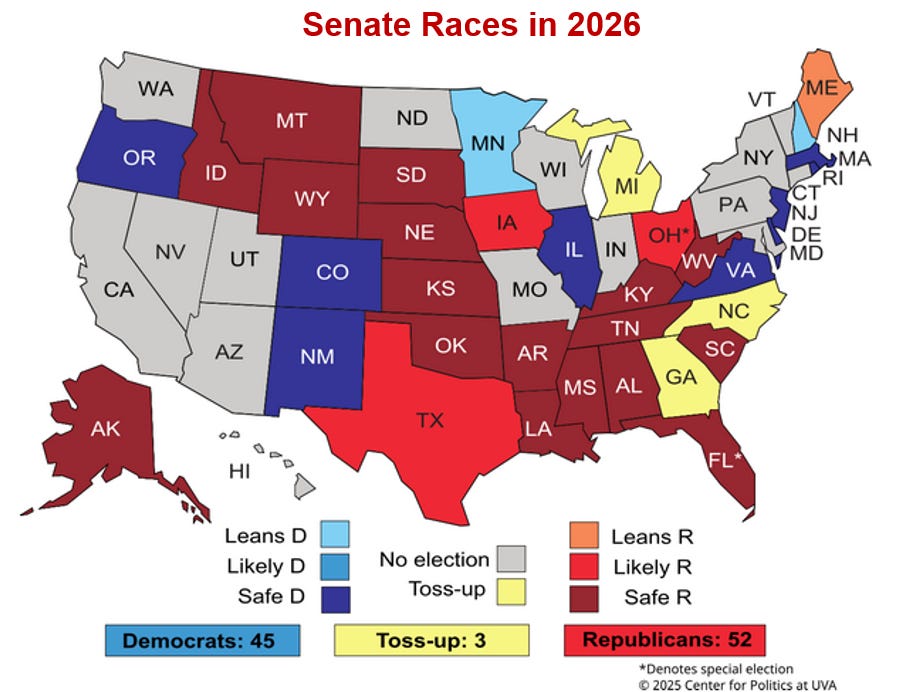
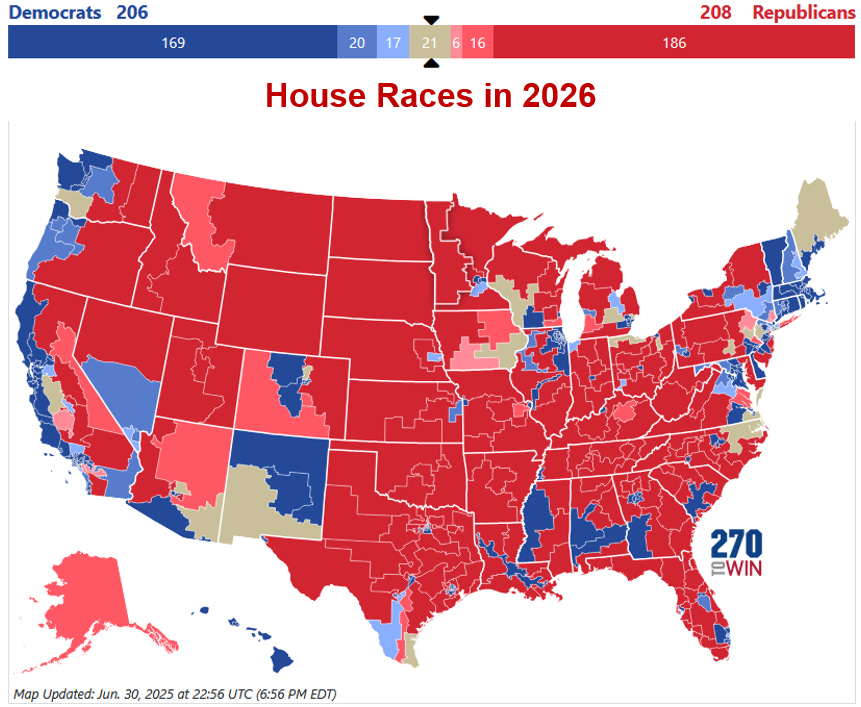

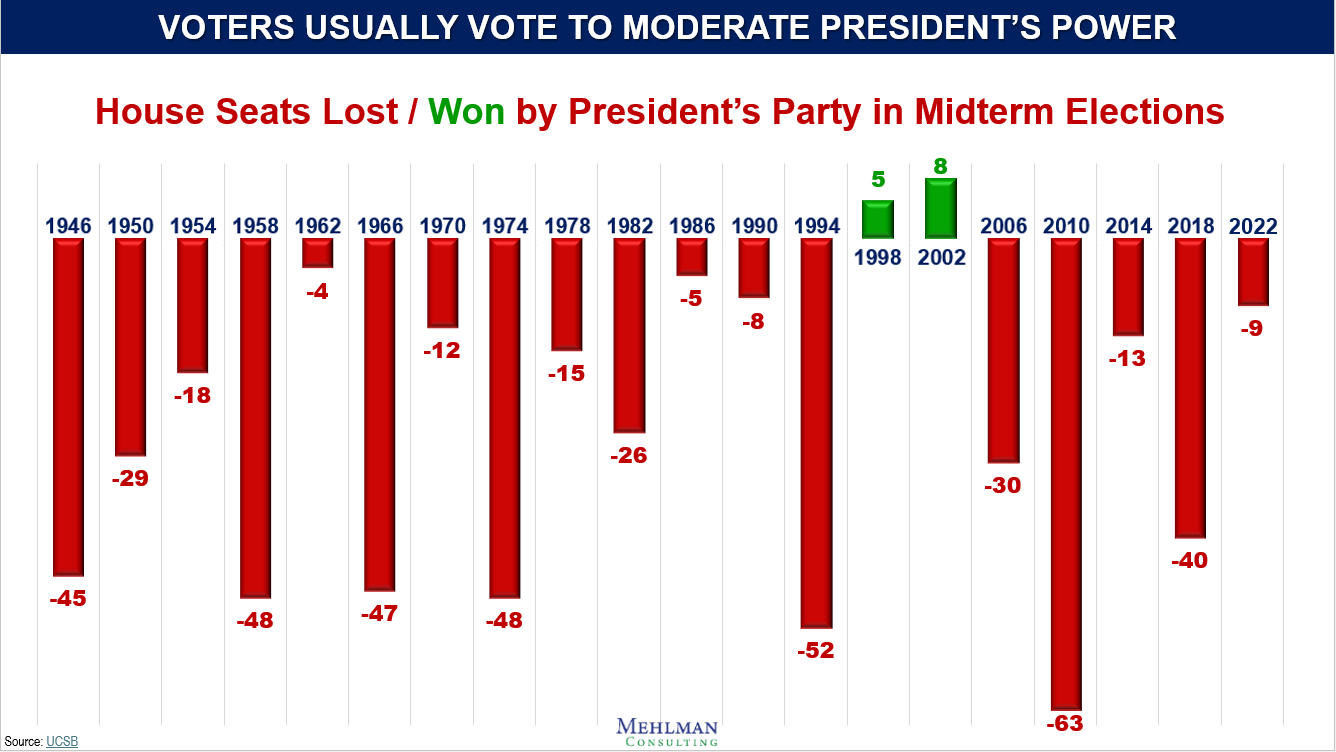



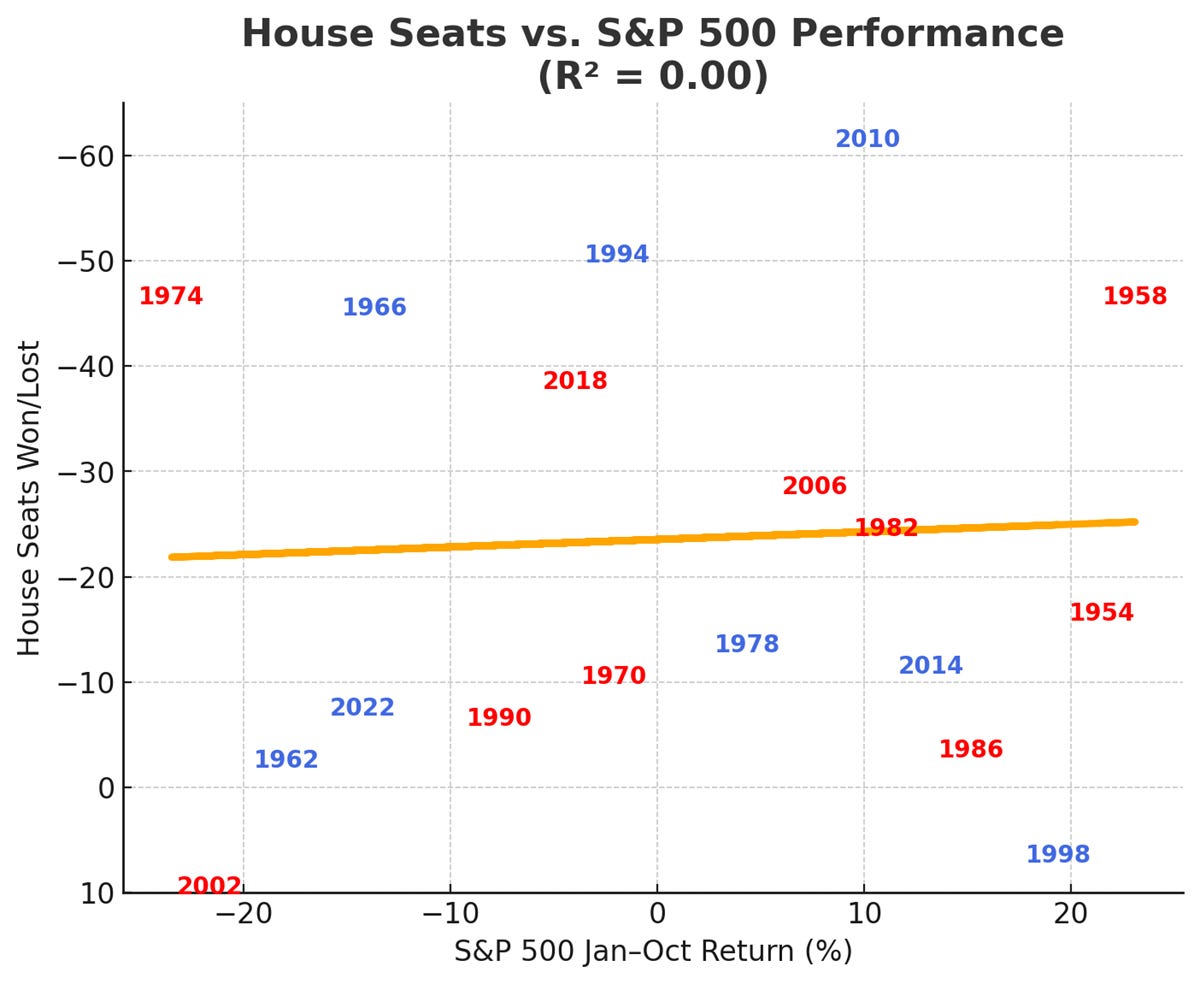
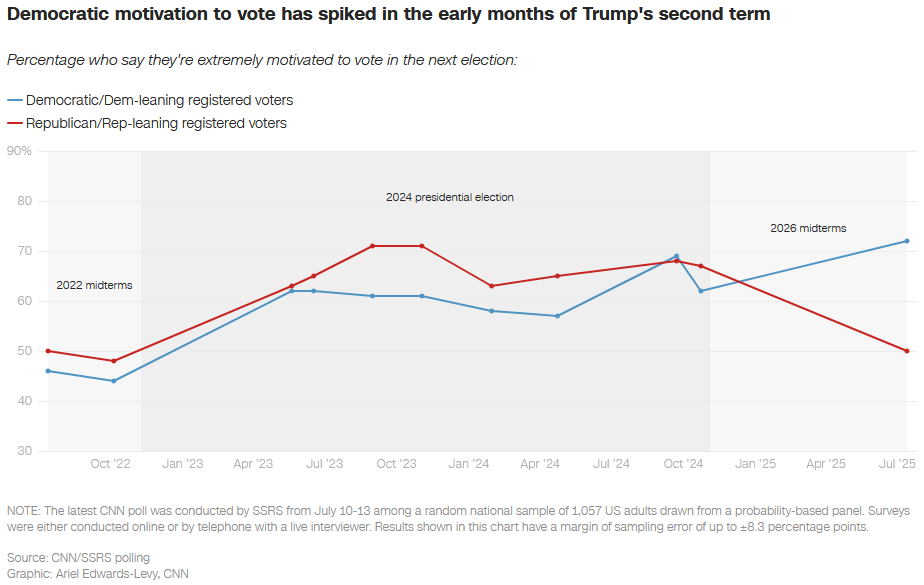
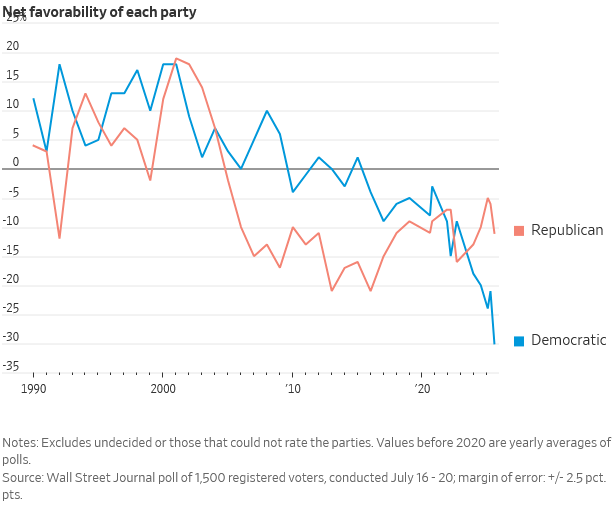
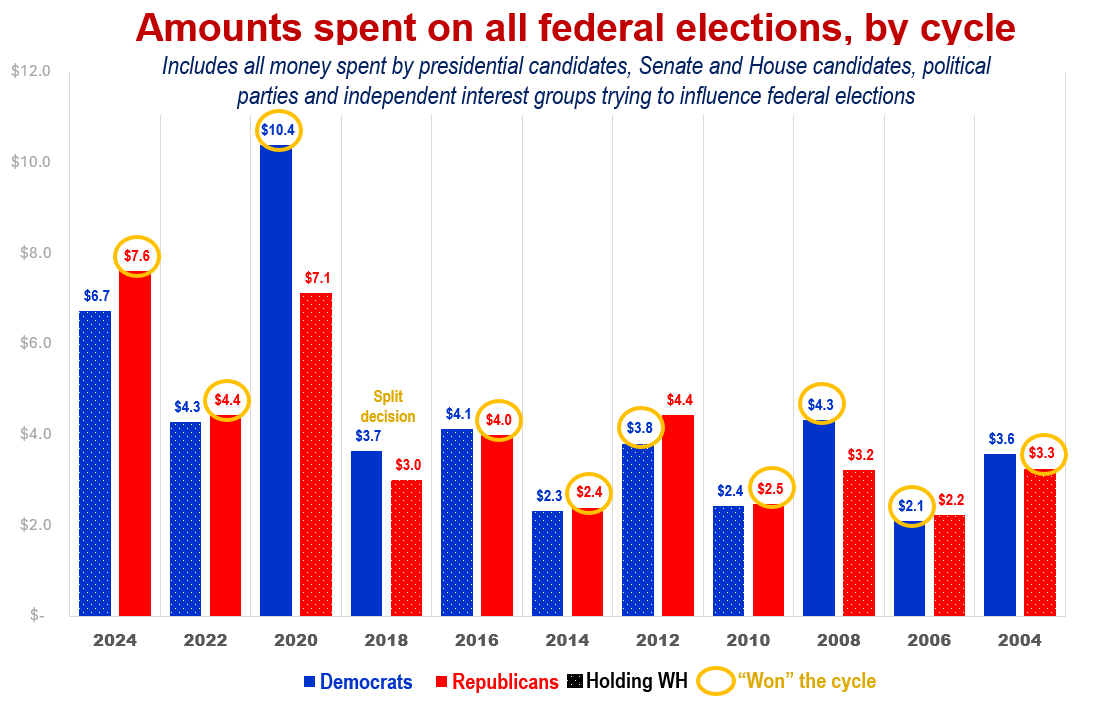
Great interview with Patrick - thanks Bruce.
Other than the last chart on spending, the rest of them are all like analyzing the stock market. They are meaningless predictors of what might happen.